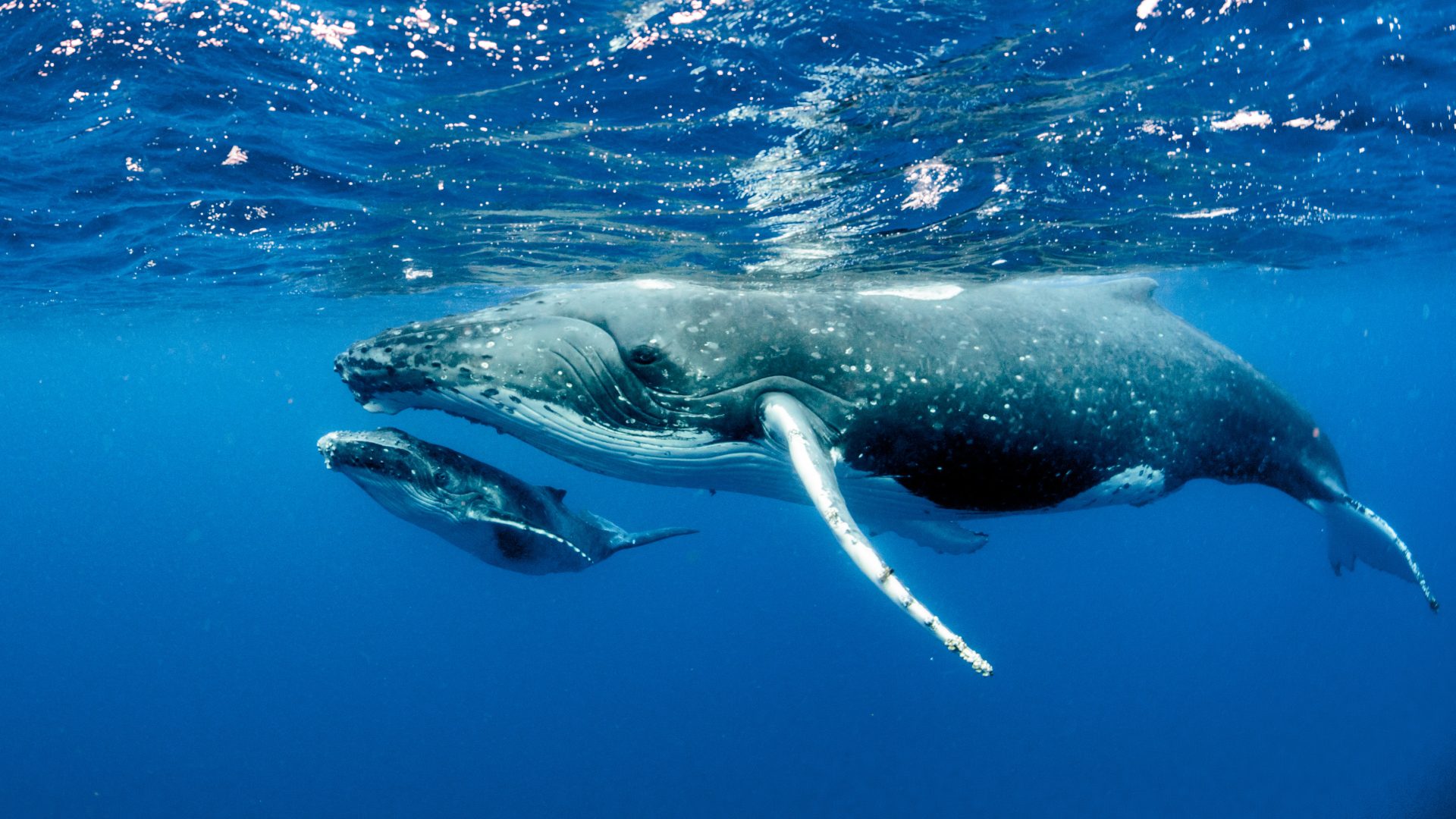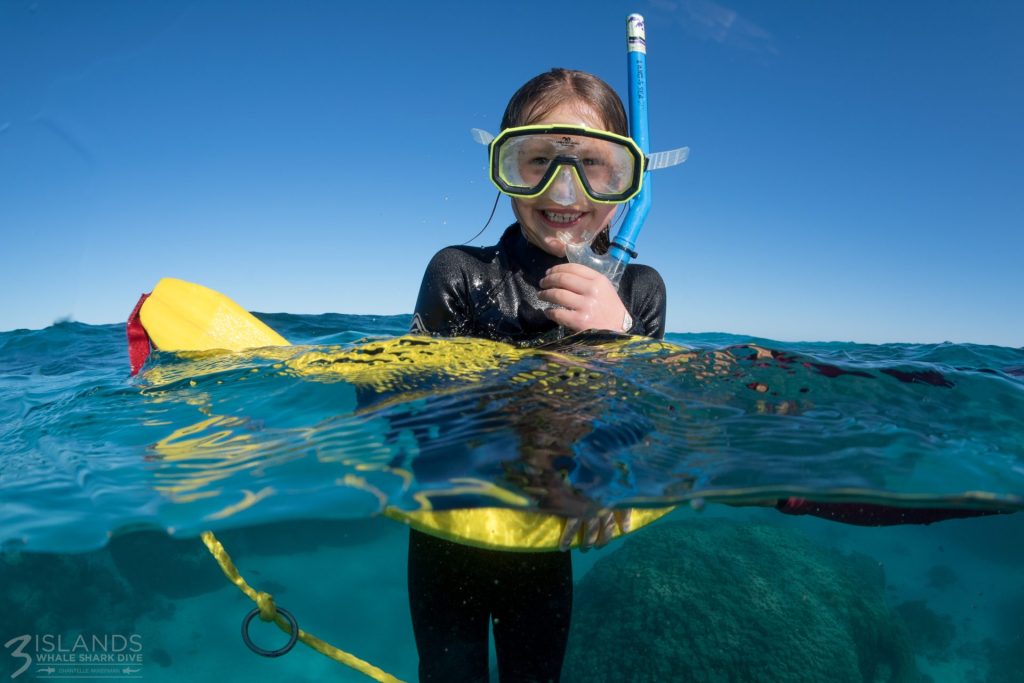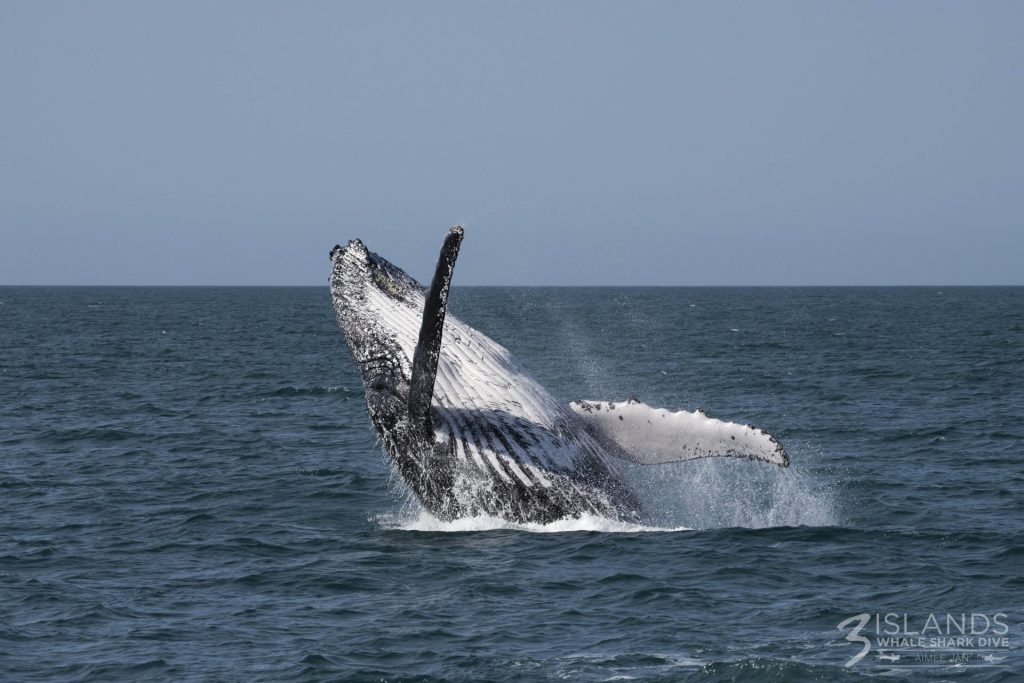The lifecycle of a humpback whale is one of the most amazing journeys on the planet. From their birth in warm tropical waters to their long migrations and incredible feeding techniques, humpbacks are constantly on the move, playing a vital role in ocean health along the way.
At Three Islands Whale Shark Dive, we love sharing the wonders of humpback whales in Exmouth with guests who want a memorable and respectful encounter with these magnificent animals. Dive in with us as we follow the stages of a humpback whale’s life, from their first breath to their lasting impact on the ocean.
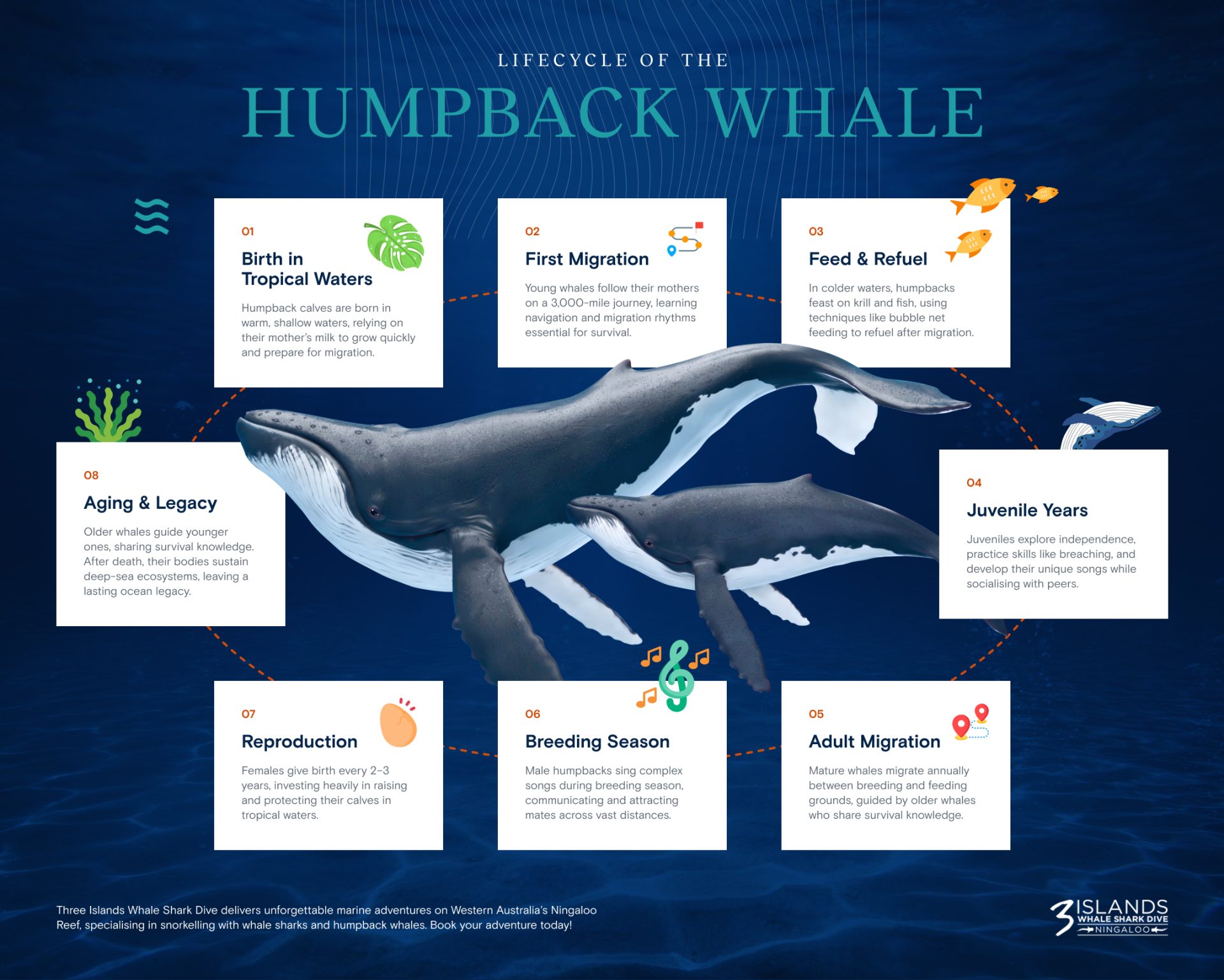
1. Starting Out: Birth in Tropical Waters
Humpback whales are born in warm, shallow waters where they can start life in a safe, predator-free environment. Popular calving areas include Hawaii, the Caribbean, and parts of the South Pacific. Calving usually happens in winter, when the tropical waters are calm and just right for newborns.
In WA, the main spot for calving is Camden Sound in the Kimberley, with the Ningaloo Reef as a secondary birthing spot. It’s an important resting area for mother and calf!
These calves are already huge at birth — around 3-5 metres long and weighing about a tonne! For the first few months, they rely on their mother’s thick, fatty milk, which helps them grow fast. Calves can consume up to 380 litres a day, and that extra blubber comes in handy as they prepare for their first big adventure: migration.
2. The First Migration: Learning to Navigate the Ocean
After a few months, mother and calf get ready for their first migration. This is a huge test for the young whale, as they set off on a journey that could be as long as 4800 kilometres. To put that into perspective, that’s 114 and a half marathons! Following their mother’s lead, calves learn about navigating open waters, keeping pace, and spotting other whales along the way.
This journey isn’t just a way to find food; it’s also a time for the calf to pick up the skills it’ll need throughout its life. During this time, the calf gets used to travelling long distances and learns about the rhythm of migration—a pattern they’ll follow every year.
What is Migration?
Migration is the seasonal movement of animals from one region to another, often driven by changes in climate, food availability, or breeding needs.
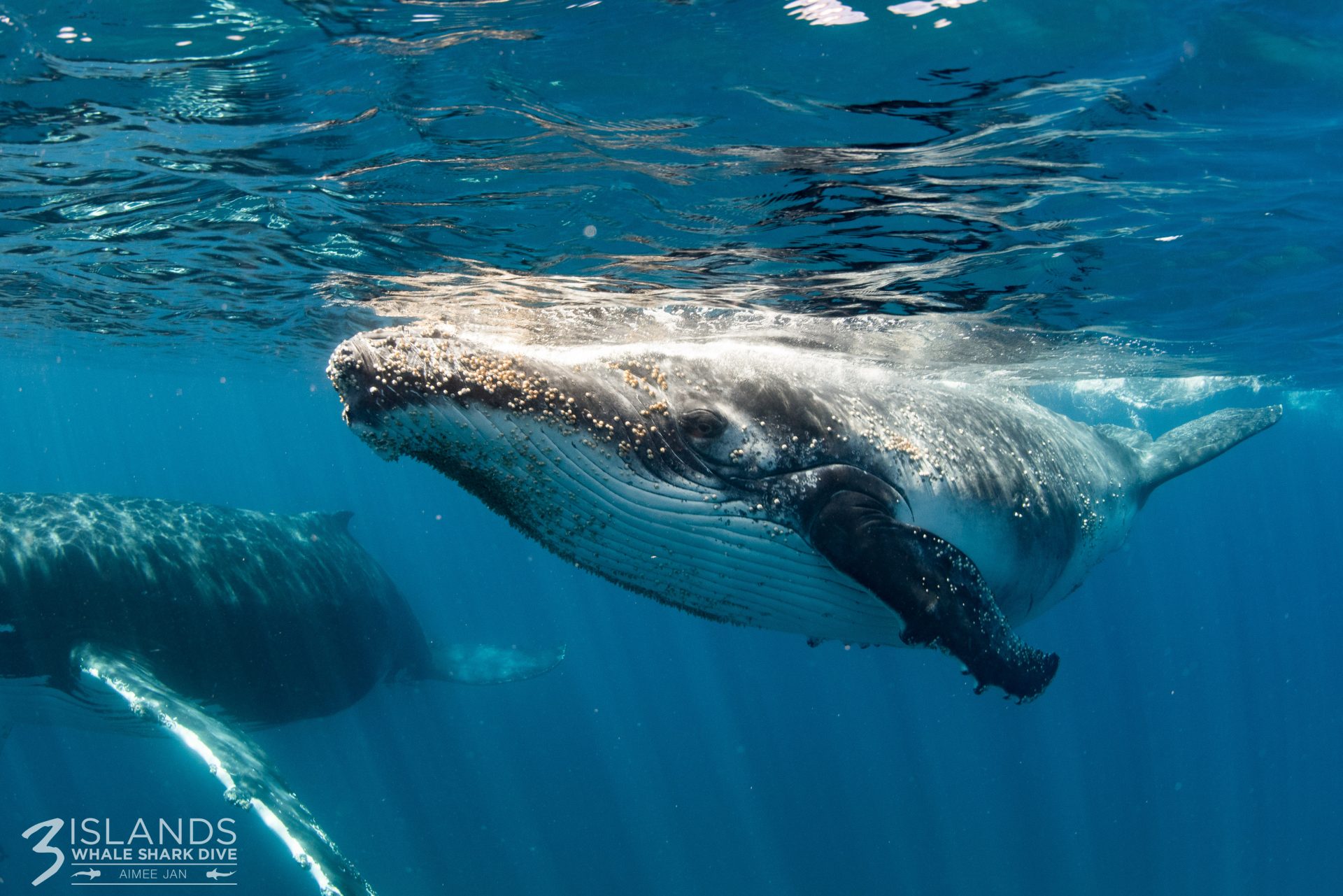
3. Feeding Grounds: Stocking Up in Colder Waters
When they reach their feeding grounds in places like Alaska, the North Atlantic or, in our whales’ case, Antarctica, humpbacks dive into some serious eating. Cold waters are packed with krill, plankton, and small fish—perfect for refuelling after the long trip. Humpbacks are filter feeders, which means they can gulp down huge amounts of water and trap food in their baleen plates.
One of the most fascinating things about humpbacks is their “bubble net feeding” technique. By swimming in a circle and blowing bubbles around a school of fish, a group of whales creates a sort of “bubble net” that traps the fish. They then take turns swimming up through the centre to scoop up their meal. This teamwork is a fantastic example of how social and intelligent these creatures are, and it’s an impressive skill for young whales to watch and learn.
4. The Juvenile Years: Learning, Playing, and Growing
As humpbacks grow into juveniles, they become more independent and start exploring the ocean on their own. They’ll often travel in small groups with other young whales, practising breaching, tail slapping, and singing. These playful activities are actually helping them build strength and practice the skills they’ll need as adults.
During this time, they also start developing their own songs. They learn by listening to older whales and adding their own twists. Singing becomes especially important later in life, during mating season, but for now, it’s all about learning the ropes and finding their place in the whale community. When you’re on one of our humpback whale tours, you’ll get a front-row seat to these amazing creatures figuring out life and finding their vibe in the whale world!
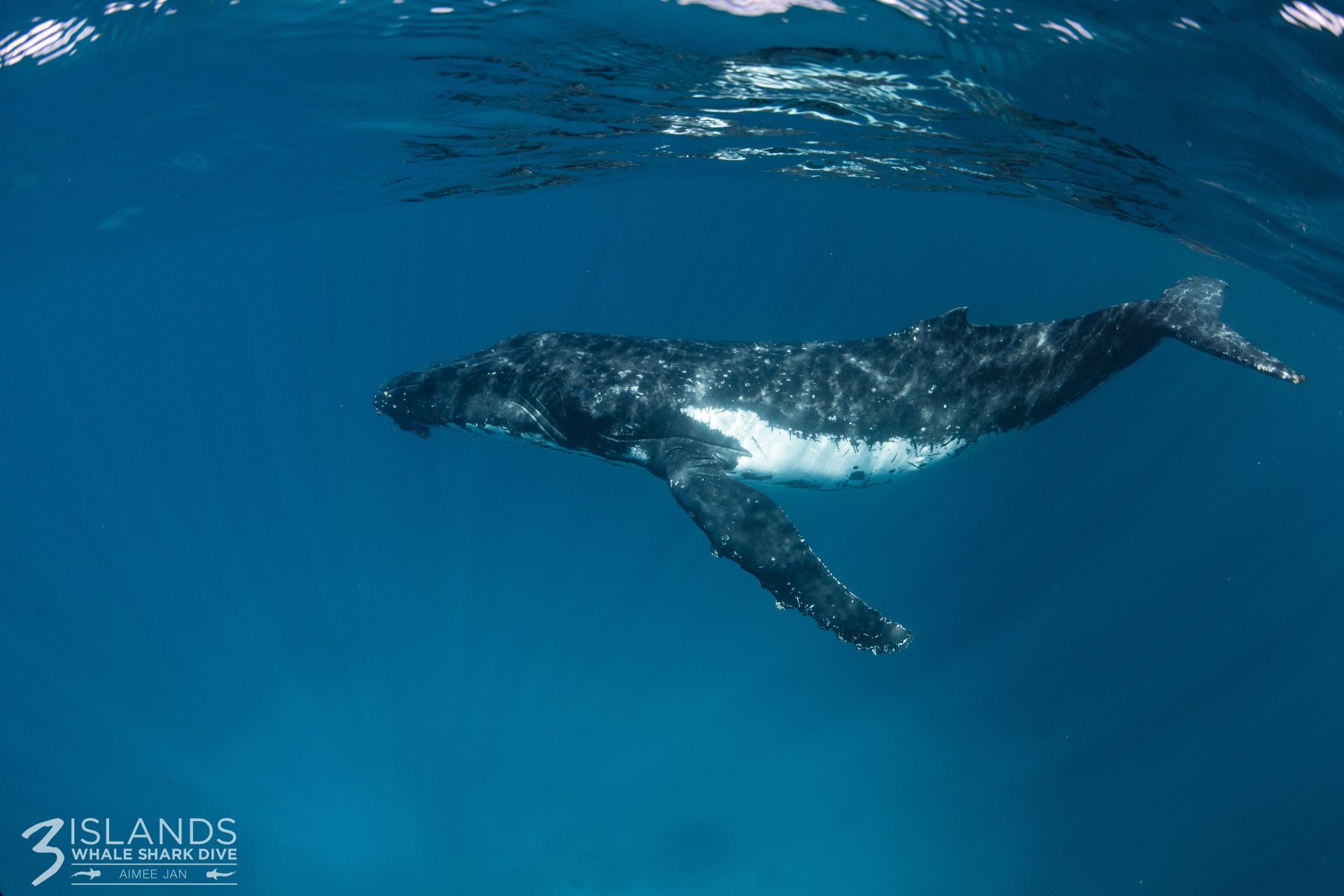
5. The Great Migration Cycle: Adult Life on the Move
By the time they’re around 5-10 years old, humpbacks reach maturity and have their migration routes memorised. These routes guide them from their breeding grounds in the north and food-rich waters in the south. Migration is essential to humpbacks’ lives; it helps them find food and safe places to breed, plus it keeps different whale populations connected.
Older whales sometimes lead the way, helping younger whales stick to safe paths and avoid danger. This annual migration cycle also supports ocean ecosystems, as humpbacks help circulate nutrients and maintain balance in the food chain.
6. The Famous Humpback Whale Songs
Humpbacks are famous for their songs. Did you know only male humpbacks sing? They perform lengthy, complex songs during the breeding season to attract mates or communicate with other males. These songs can last for hours, with each population developing its own unique tune that changes slightly each year. Scientists believe these songs play a key role in humpback social life, helping them bond and interact across vast distances.
7. Reproduction: Welcoming the Next Generation
Once every two or three years, female humpbacks prepare to give birth, returning to the warm, shallow waters of the tropics. Males, meanwhile, compete for mates by putting on impressive displays of strength, including breaches, tail slaps, and even underwater “dance-offs.”
Humpbacks have a low reproduction rate compared to other animals, which makes every calf that much more precious. A mother invests a lot of time and energy in each calf, protecting and guiding it until it’s ready to set out on its own.
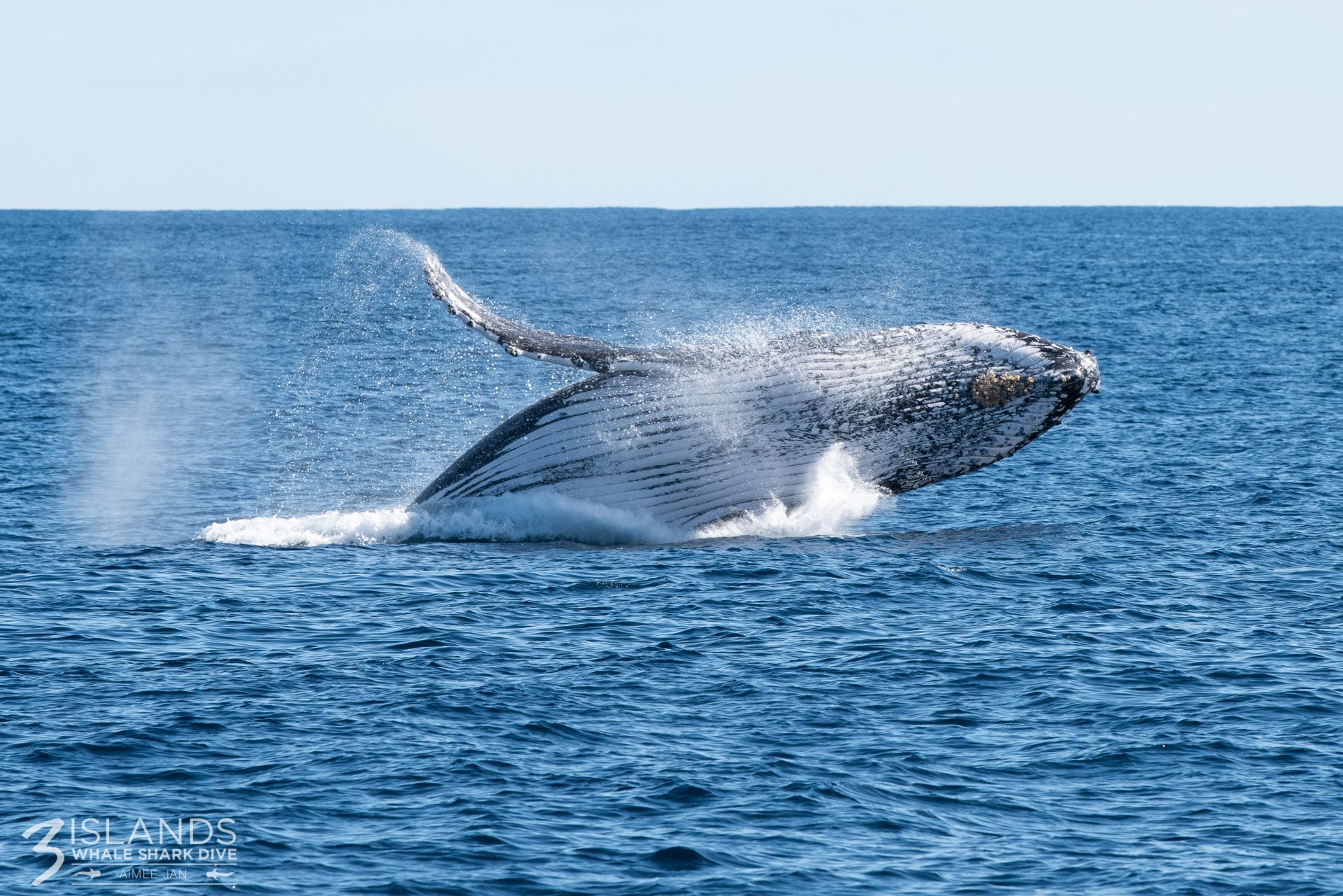
8. Aging and the Role of Older Whales
In the wild, humpbacks can live around 45-50 years, although some reach even older ages. As they age, their migrations may shorten, and they become slower, but their value in the pod actually grows. Older whales are respected guides and protectors, often showing younger whales the best migratory routes, feeding techniques, and survival strategies.
These experienced whales help ensure that vital knowledge is passed down, making them invaluable to the survival of their population.
9. Challenges and Conservation Efforts
Despite their strength and resilience, humpbacks face a range of threats. Natural predators like orcas are part of their world, but human activities pose a bigger danger:
- Ship Strikes: Fast-moving vessels can collide with whales, especially in busy shipping lanes.
- Fishing Gear: Nets and fishing lines sometimes entangle humpbacks, causing injuries or even death.
- Pollution: Ocean plastics and chemicals can harm humpbacks directly or contaminate their food.
- Climate Change: Warmer waters and changing prey availability force humpbacks to adapt to shifting conditions.
Fortunately, conservation efforts have helped humpback populations recover in many parts of the world. Marine sanctuaries, sustainable tourism, and international protections give humpbacks a fighting chance to survive and thrive.
10. End of Life and Legacy: The Whale Fall
When a humpback whale reaches the end of its life, it leaves behind a final gift to the ocean. After death, its body sinks to the ocean floor, creating what’s known as a “whale fall.” This underwater habitat provides food for deep-sea creatures and can sustain an entire ecosystem for years. Even after death, humpbacks continue to give back to the ocean, showing just how deeply connected they are to marine life.
Witness the Magic of Humpback Whales
The lifecycle of a humpback whale is a journey unlike any other, filled with incredible migrations, powerful songs, and essential contributions to ocean ecosystems. At Three Islands Whale Shark Dive, we offer respectful, eco-friendly Humpback Whale Tours, where you can witness humpbacks in their natural habitat.
Join us at Australia’s stunning Ningaloo Reef and experience the awe of seeing these giants up close, knowing that each encounter supports sustainable tourism and the health of our oceans. Book a tour today!
More...
Fun Humpback Whale Facts For Kids
Fun Humpback Whale Facts For Kids Humpback whales are among the most fascinating creatures in the ocean, captivating anyone lucky enough to spot them! Whether your family is planning a trip to the coast or simply curious about marine life, these fun humpback whale facts for kids will spark curiosity and wonder. Let’s dive into…
Why Do Humpback Whales Sing?
Did you know that sounds travel up to four times faster in water than in air? Like most marine animals traversing the deep, dark ocean, humpback whales rely on vocalisation to communicate underwater. But why do humpback whales sing? And, how? For mating purposes? To communicate? To find food? To show off? A series of…


